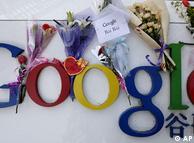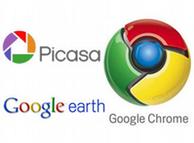今天有個應用
Chen: 對阿, 讀書
大陸有一個財經名嘴叫郎咸平您有聽過嗎?
Chen: 他倒是滿有趣的書店很多他的書他是台灣人
CCTV 2也經常有他的電視演講
如果您對財經有興趣的話 可以翻翻
他可能可以算是財經界的李敖
後來發現Gmail的FT和WSJ 有11處提到他
Gmail: Can't Live with It — or Without It
On April 1, 2004, Google announced that it was getting into the e-mail business. Its Web-based, ad-supported service, Gmail, wasn't much more than a basic inbox with a great search feature. But it offered 1 GB of storage for free in an era when 1/250th of that amount was considered luxurious, leaving some observers — myself included — wondering if the
press release trumpeting Gmail was an April Fools' prank.
Nowadays, when Gmail makes headlines, it's often for service hiccups. Outages and slowdowns, usually brief and isolated, are fodder for both news stories and panicky tweets ("Is Gmail down for everybody or just me?"). Last month an embarrassing bug crippled the service for about .02% of users — 30,000 folks — for five days. When you're as central to the way people get stuff done as Gmail is, trouble for a tiny percentage of users is still trouble for a lot of people. (See 10 Gmail tricks you might not know.)
Gmail's biggest challenge isn't its reliability record, which remains sterling compared with most of the corporate e-mail systems it's been known to replace. It's the sheer number of things it does. Little by little, 2004's stripped-down Web mail morphed into a kitchen sink.
The emphasis on crazy quantities of storage remains — I currently have 1.8 GB of e-mail and 5.5 GB of room to spare. There's no longer anything basic about the service, though. It's chockablock with features, options and related tools, some of which are only tangentially related to e-mail. You can use it to place phone calls to any landline in the U.S. for free. And make video calls. And send text messages or do instant messaging. You can manage your calendar on the left and your to-do list on the right. Did I mention Buzz, the Twitter-like social network that was briefly controversial last year before sinking largely unnoticed into the Gmail gumbo?
A Google engineer invented Gmail in his spare time, and the current incarnation still feels like a bunch of geeks built it to please themselves. More than 50 features reside in its Labs section, a repository of optional, experimental tools that's an interesting peephole into the minds of the developers. Some of the Labs features are straightforward and useful, like extra keyboard shortcuts and the ability to view Flickr photos inside messages. Others are a tad idiosyncratic, like Don't Forget Bob, which looks at a message's recipients and suggests other people you might want to add to the list. And a few are downright peculiar, like Mail Goggles, which forces you to perform simple math problems before permitting you to send e-mail late at night over the weekend — just in case you partied too heartily and are about to send a message you'll later regret.
I use and like numerous Labs features, but exploring the offerings always leaves me wishing that the Gmail team spent less time on quirky side projects and more time on the fundamentals. For instance, Gmail's user interface is a cacophony of links, buttons, menus and lists, with none of the pithy discipline of the Google.com home page. For years, the inbox let you read messages only in a threaded view called Conversations, which people tended to either adore or despise. It recently started allowing you to switch to a conventional, unthreaded view but still doesn't offer the option that makes the most sense to my particular brain: Conversations sorted in reverse-chronological order, like the inbox itself. (By organizing them with the oldest messages at the top, Gmail requires superfluous scrolling to get to the most recent items.) (See Google in TIME's list of the 50 best iPhone apps of 2011.)
Every so often, I get fed up with Gmail and flee. Sometimes I abscond to a big-name rival like Microsoft's recently spruced-up Hotmail, and sometimes to a spunky upstart like Threadsy. (Thanks to Gmail's support for the IMAP e-mail protocol, it's possible to abandon it for an alternative and take your e-mail address and mail with you.) So far, I have always come skulking back. For all of Gmail's flaws, it has the same relationship to other e-mail clients that Churchill said democracy has to other forms of government: it's the worst one except for everything else.
Part of the problem isn't Gmail but e-mail itself. Programmer Ray Tomlinson invented it in 1971, when the only people on the Internet were a smattering of government researchers and academics. Today e-mail is abused as much as it's used, by spammers, marketers, nutty uncles and others who bombard our inboxes. Once an unimaginably speedy form of communication, it can feel plodding and overcomplicated compared with younger, sprightlier alternatives such as Twitter, Facebook Messages and text messaging. Maybe that explains why young people aren't all that attached to it. (A recent survey said the amount of time 12-to-17-year-olds spent using Web-mail services like Gmail on their computers tumbled 48% in a year.)
In short, e-mail is ripe for reinvention. Google is doing its part with Priority Inbox, which monitors your Gmail inbox, watching which messages you open and attempting to push the one you'll want to read right away to the top. For me, the option seemed hopelessly crude and confusing at first. But once we figured each other out, it became a compelling reason to stick with Gmail rather than leave in a snit. (See the promises and pitfalls of cloud computing.)
Google's most radical rethinking of e-mail didn't show up within Gmail, however — it was with Wave, a stand-alone service that the company announced in 2009. Wave didn't set out to improve e-mail so much as replace it with a hybrid of mail, instant messaging, word processing and file sharing, and it was rife with big ideas. (As you typed a message, your correspondents could see it arrive character by character, typos and all.)
The company unveiled Wave with hoopla that might have impressed even Steve Jobs, put it into beta testing, and opened it up to the public. And then ... Google pulled the plug after just a few months when the service wasn't an immediate hit. It was a little as if Ray Tomlinson had given up on this e-mail thing in 1972. (Comment on this story.)
I hope the Wave wipeout hasn't left Google too timid. Reinventing e-mail may be a daunting proposition, but reinventing just one e-mail service — Gmail — would be a great start. And in this case, the best way to reinvent it might be to bring back some of the minimalist thinking that helped make Gmail such a wonder back in 2004.
McCracken blogs about personal technology at Technologizer, which he founded in 2008 after nearly two decades as a tech journalist; on Twitter, he's @harrymccracken. His column, also called Technologizer, appears every Thursday on TIME.com.
 Bildunterschrift: 2010年3月 部分中国网民在谷歌公司门口为谷歌鲜花
Bildunterschrift: 2010年3月 部分中国网民在谷歌公司门口为谷歌鲜花